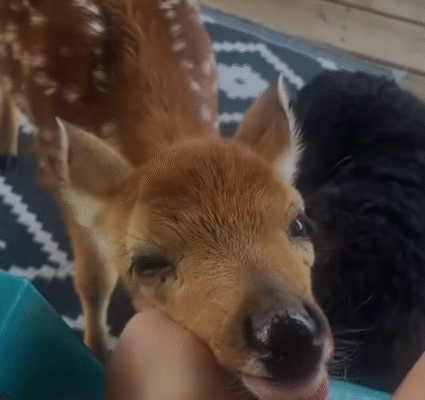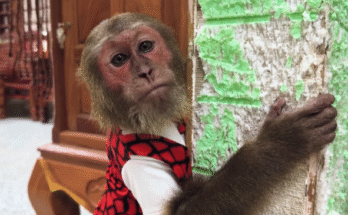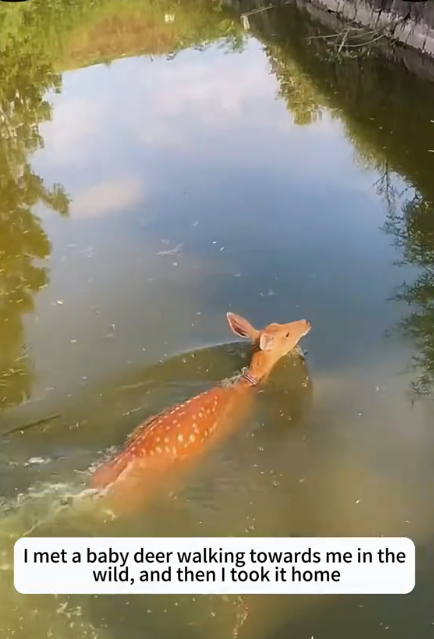
It was a quiet Sunday morning, and the forest near our home was alive with the sounds of birds, rustling leaves, and the occasional snap of a twig. I had planned to go on a short walk to clear my mind and enjoy the summer breeze. Little did I know, that walk would lead me to a heart-touching encounter with a helpless creature that would forever remain etched in my memory.
As I wandered deeper into the forest, following a trail I had taken countless times before, something felt different. There was a certain tension in the air, as if the woods were holding their breath. I slowed my steps and listened. That’s when I heard it—a faint, high-pitched bleat, almost like a cry for help.
I paused, trying to locate the source. The sound repeated, coming from a clump of bushes just off the trail. Curiosity and concern took over. I carefully stepped off the path, brushing branches aside as I moved toward the noise.
There, nestled among the foliage, was a tiny baby deer—a fawn. It couldn’t have been more than a few weeks old. Its legs were folded awkwardly beneath its body, and its large, dark eyes were filled with confusion and fear. Its reddish-brown coat was dotted with white spots, a natural camouflage, but it was trembling, clearly alone and scared.
I knelt slowly, not wanting to alarm it further. The fawn didn’t try to run; it was either too exhausted or too frightened. I could see a few scratches on its legs, and it looked thinner than it should have. My heart broke at the sight.
First, I looked around for any sign of its mother. Sometimes, doe will leave their fawns in hidden spots while they forage nearby. I waited quietly for several minutes, scanning the forest for movement. Nothing. No rustle, no sound. It had been too long. This baby deer wasn’t being temporarily hidden; it had been abandoned or separated from its family.
Realizing this, I knew I had to help. But rescuing a wild animal isn’t as simple as picking it up and bringing it home. I didn’t want to cause more harm than good, so I pulled out my phone and called the local wildlife rescue center. Thankfully, they had staff available to guide me.
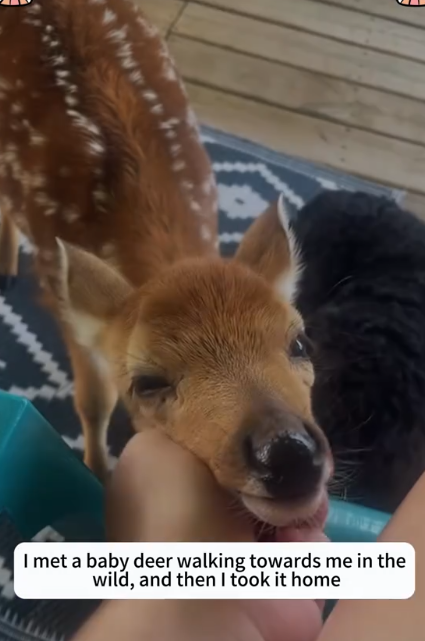
The expert on the line advised me to check for any obvious injuries, avoid feeding the fawn anything, and try to keep it warm and safe until help could arrive. Since I was only about a 15-minute walk from home, I decided to carry the fawn back carefully and wait there for the wildlife team.
I took off my hoodie and gently wrapped it around the baby deer. It didn’t resist—just looked up at me with those wide, innocent eyes. As I lifted it, I could feel how fragile and light it was. Its little body shivered against my chest, but it didn’t struggle. That moment created a bond I hadn’t expected.
The walk back felt longer than usual. I kept whispering soft reassurances to the fawn, trying to keep it calm. I could feel its heartbeat thumping rapidly against my arm. My own heart was pounding, too—not from exertion, but from hope and anxiety.
Once home, I placed the fawn gently in a shaded corner of our backyard, away from noise and stress. I laid down an old blanket, and the fawn curled up on it, eyes closing briefly as if finally finding a moment of peace.
The wildlife rescue team arrived about thirty minutes later, bringing with them a sense of relief. They were calm, knowledgeable, and kind. One of the rescuers, a woman named Karen, examined the fawn and confirmed that it was a female, likely about 2-3 weeks old. She had some dehydration and minor injuries, but overall, she was in stable condition.
Karen praised the quick response and care I had provided, explaining that many people make the mistake of trying to feed fawns or assume they are abandoned when they are not. In our case, though, it was clear the baby had been truly separated and would not have survived without intervention.
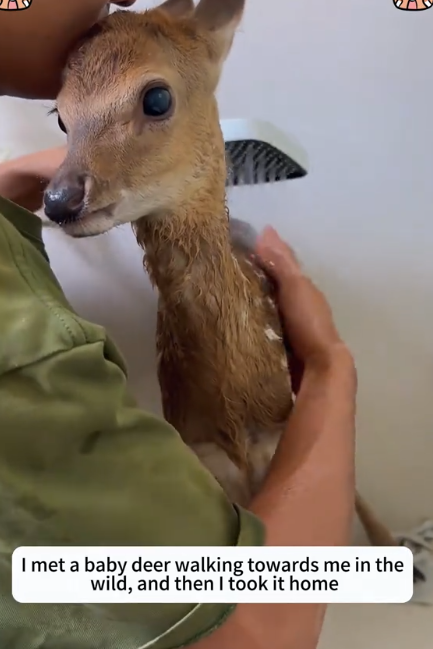
They gently placed the fawn in a special padded carrier and reassured me that she would be taken to a rehabilitation center. There, she would receive fluids, food, and medical care. If all went well, she could be released back into the wild within a few months, once she was strong enough to survive on her own.
Watching the rescue van drive away was bittersweet. I felt a sense of accomplishment and relief, but also a tug at my heart for the tiny creature I had briefly cared for. I didn’t know if I would ever see her again, but I hoped with all my heart that she would thrive and return to the forest where she belonged.
The days that followed were filled with reflection. That simple walk had turned into a mission of compassion, teaching me the importance of staying alert, being informed, and acting responsibly when encountering wildlife. I stayed in contact with the rescue center, and a week later, I received an update: the fawn—whom they had nicknamed “Willow”—was recovering well. She had started to eat solid food and was bonding with another rescued fawn of similar age. Together, they would be prepared for life in the wild.
That news brought me immense joy. Knowing that Willow had a second chance, and that I played a small role in her story, reminded me of how connected we all are—to each other, to nature, to every living thing.
Rescuing that stray baby deer was more than an act of kindness. It was a reminder of the fragile beauty of life and the responsibility we share to protect it. Every creature, no matter how small, deserves a chance to grow, to run freely, to live without fear. And sometimes, all it takes is one person willing to stop, listen, and act.
If you ever find yourself in a similar situation, remember this: observe first, act gently, and always seek help from professionals. Wild animals are not pets, but they do deserve respect and care. You might not save the whole world, but for that one life, your compassion could mean everything.
